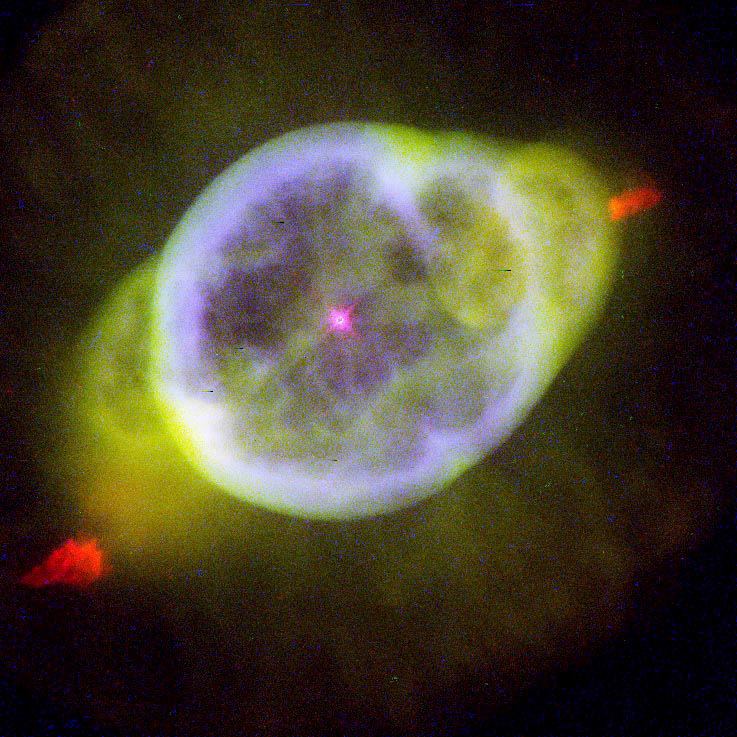Right ascension 10 24 46.1 Distance 1400 ly ly Apparent dimensions (V) 25″ | Declination −18° 38′ 32.6″ Apparent magnitude (V) 8.60 | |
 | ||
NGC 3242, commonly known as the Ghost of Jupiter, is a planetary nebula located in the constellation Hydra.
William Herschel discovered the nebula on February 7, 1785, and cataloged it as H IV.27. John Herschel observed it from the Cape of Good Hope, South Africa, in the 1830s, and numbered it as h 3248, and included it in the 1864 General Catalogue as GC 2102; this became NGC 3242 in J. L. E. Dreyer's New General Catalogue of 1888.
This planetary nebula is most frequently called the Ghost of Jupiter, or Jupiter's Ghost due to its similar size to the planet, but it is also sometimes referred to as the Eye Nebula. The nebula measures around two light years long from end to end, and contains a central white dwarf with an apparent magnitude of eleven. The inner layers of the nebula were formed some 1,500 years ago. The two ends of the nebula are marked by FLIERs, lobes of fasting moving gas often tinted red in false-color pictures. NGC 3242 can easily be observed with amateur telescopes, and appears bluish-green to most observers. Larger telescopes can distinguish the outer halo as well.
